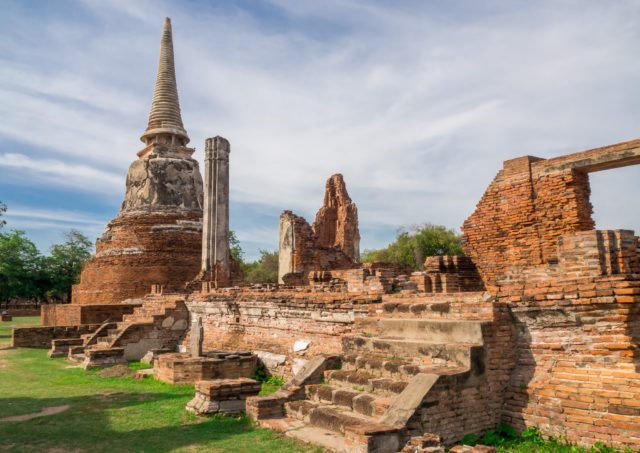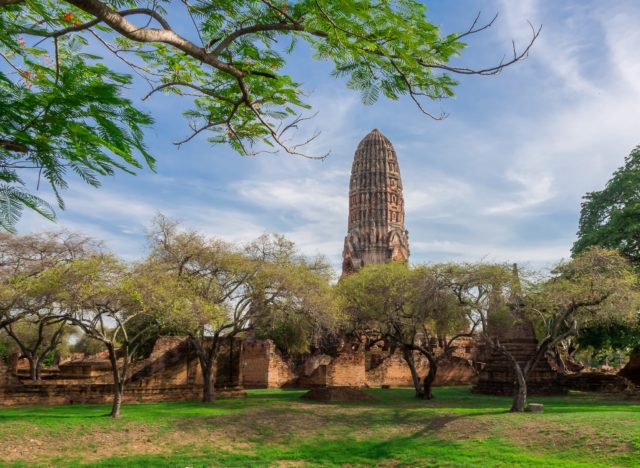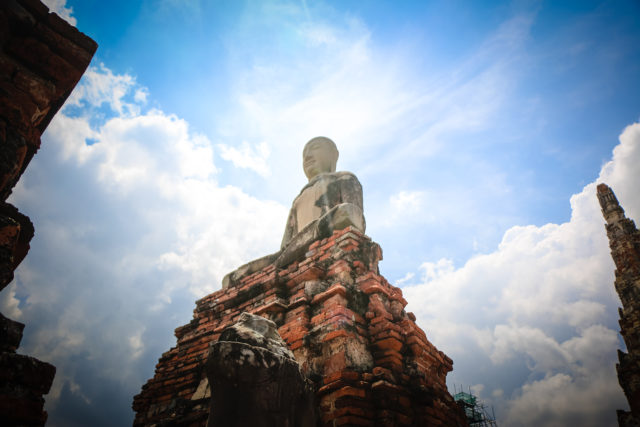The ancient city of Ayutthaya is located in Thailand, 70 kilometers (43 miles) north of Bangkok. The impressive ruins of this once grand city attract many tourists these days.
Ayutthaya was founded back in 1350 by King U-Thong. The city is the second ancient capital of the Kingdom of Ayutthaya, the first one being Sukhothai.
The city is located on an island with the Chao Phraya, Lopburi, and Pa Sak rivers on three sides. At the time of its founding, the Gulf of Thailand existed and bordered the city to the south. Such a location made it possible to protect Ayutthaya not only from seasonal floods but also from attacks by naval ships from other countries.
Since the city is located between China, India, and the Malay archipelago, Ayutthaya became the trading capital of Asia.

It is claimed that by 1700, more than 1,000,000 people lived in the city. Ayutthaya was given the title of the largest city on earth and the center of world trade. International merchants congregated there, and European merchants thought highly of the city’s trade.
Certainly, Ayutthaya looked the part of a wealthy city – it had golden palaces, conducted large ceremonies, and had merchant ships from around the world in its ports. However, its days of grandeur were numbered.
In 1767, the Burmese army invaded the city and launched a successful attack. After their victory, the Burmese burned Ayutthaya to the ground, destroying it as completely as they could. The locals were forced to leave their houses, and the city became abandoned.
Unfortunately, the city has never been restored to its former glory. The inhabitants chose not to rebuild but to move their capital to another site. In fact, when Bangkok was built, surviving architects and builders from Ayutthaya were employed, and they made a conscious effort to replicate the layout and architecture of the former capital.
But not rebuilding the city has meant that the ruins of Ayutthaya were well-preserved and have now become an important archaeological site. Since December 13, 1991, 289 hectares of the city became a UNESCO World Heritage site.

Currently, visitors are able to visit the city and walk through the archaeological ruins. The size of the monasteries and the towers indicate the splendor of the former city’s architecture. In Ayutthaya, the temples and palaces were made of stone, meaning that they survived the fire that destroyed the rest of the city.
The history of Ayutthaya is considered the most devastating in the history of Thailand. But despite its brutal and abrupt end, this once-great city of trade has now developed a blossoming tourism business. The proximity to Bangkok allows locals to make day trips there for a walk among the ancient ruins.
The historic city of Ayutthaya is protected by Thailand’s Ancient Monuments Act. Also, committees for the protection and development of the historic city of Ayutthaya were created at national and local levels. Furthermore, the government provides a budget for the preservation and development of this important cultural and architectural site.
The historical city of Ayutthaya is part of a park within the city of Phra Nakhon Si Ayutthaya. The modern-day city is flourishing. It has 45 medical institutions, the main one of which is Ayutthaya Provincial Hospital. There are also eight schools and 16 educational institutions in the city.
The main business activity of the modern city is trade, and the buildings are decorated with paintings in various traditional styles.
Big thank you to Pathiparn Khongkum and Erik Haze for allowing us to share some of their photographs from that location!


























Another Article From Us: Abandoned Water Park – Ho Thuy Tien, Vietnam

